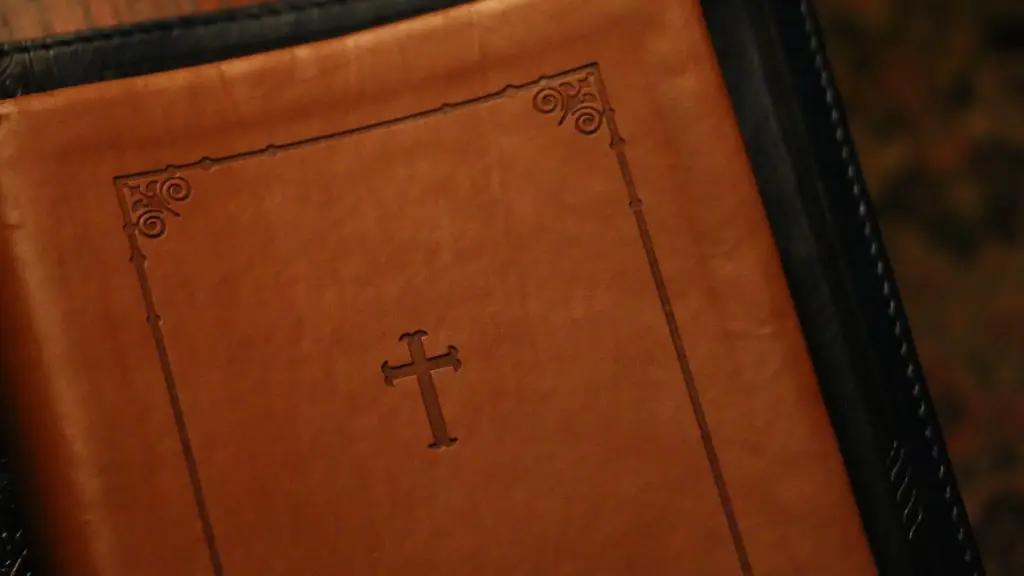Since the dawn of civilization man has sought faith, hope and truth often looking to superstitions and religious texts for guidance. One such text, the Bible, has caused much controversy and debate since its inception. But just how can we tell if this divinely inspired text is real? Does its contents hold up to the scrutiny of science, archeology and historiography?
While there are many possible answers to those questions, some will point to literary analysis. Many of the texts in the Bible,has particulaly Old Testament, show various types of Literary Analysis,including but not limited to exposition, description,narration,argumentation and Dialectic.All of these styles and forms contribute to the overall structure,unity,and purpose of the Bible.
It’s also important to consider the historical and cultural context of the Bible.Historians believe that the Bible is composed of ancient documents that reflect the views and social structures of the time period. By understanding the cultural and political settings of the period in which the Bible was written,we can gain a better understanding of why certain elements are included in a given passage and why certain worldly views are expressed.
To further assess the validity of the Bible, one must also look to archeology. Archaeologists have used the Bible as a primary source for excavating ancient sites and artifacts,and much of what we know about ancient societies and cultures has been gleaned from such archaeological sites.
The study of ancient languages is another important factor in ascertaining the Bible’s authenticity. Through the use of advanced linguistics techniques,such as linguistics archeology, experts are able to interpret more accurately the ancient language of the Bible and make conclusions about the authenticity of the text. For example, recently language archeologists have used the Dead Sea Scrolls to interpret words and symbols that are found in the text of the Bible.
Another source of evidence is the analysis of ancient manuscripts. Scholars have long studied ancient manuscripts in order to understand the composition of various texts, including the Bible. By comparing these manuscripts,we can understand the evolution of thoughts and overall contents of the Bible.
Finally, we can consider the content and message of the Bible itself. By understanding the biblical themes and message,we can better assess whether or not the Bible is true and authentic.
Data Analysis
Proving the authenticity of ancient texts is no easy task. But, there are many techniques that we can use to better assess the validity of ancient scriptures, including the Bible. One such method is data analysis. Data analysis involves analyzing large sets of data in order to identify patterns and trends. In the case of the Bible,data analysis can help assess the consistency of texts,their authorship,and the faithfulness of translation.
Data scientists have used data analytics for many years to assess ancient text authenticity. By studying and analyzing large sets of data,they are able to identify patterns and anomalies that can help us assess the accuracy and authenticity of various ancient texts,including the Bible. This type of analysis has revealed that the Bible is,in fact, a highly accurate and authoritative source of knowledge.
Scientific Testing
In addition to data analysis,scientific testing is another way to assess the authenticity of ancient documents, including the Bible. Through scientific testing, we can analyze the language,content,materials,and authorship of a text in order to determine its authenticity. For example,scientists have used radiocarbon dating to assess the age of manuscripts and artifacts that have been used in creating the Bible.
In recent years, sophisticated imaging technology has allowed researchers to study the composition of ancient texts in greater detail than ever before. By using high-resolution imaging,experts can study the ink,paper,and writing materials of a given text and make educated conclusions about who wrote it and when. This type of analysis has revealed that the Bible is, in fact, an ancient and accurate source of knowledge.
Scholarly Analysis
Finally, we must consider scholarly analysis. Scholars have long sought to understand the true nature of the Bible by studying the texts and interpreting them within the greater context of history and literature. By studying ancient documents,commentaries, studies,and historical writings,scholars can gain greater insight into the true nature of the Bible and how it has been interpreted throughout the ages.
The Bible has been studied for centuries by scholars, theologians, and laypeople alike. Through this ongoing study,we can gain a greater understanding of the Bible and its contents. This knowledge can help us make more informed conclusions about the authenticity of texts such as the Bible.
Conclusion
In conclusion, there are many ways that we can assess the validity of the Bible. By examining the text through literary analysis, historical and cultural context, archeology, linguistics, data analytics,science,and scholarly analysis,we can gain a better understanding of the accuracy and authenticity of this ancient document. Through such analysis and study,we can come to a conclusion that the Bible is,in fact, a authentic and divinely inspired text.



